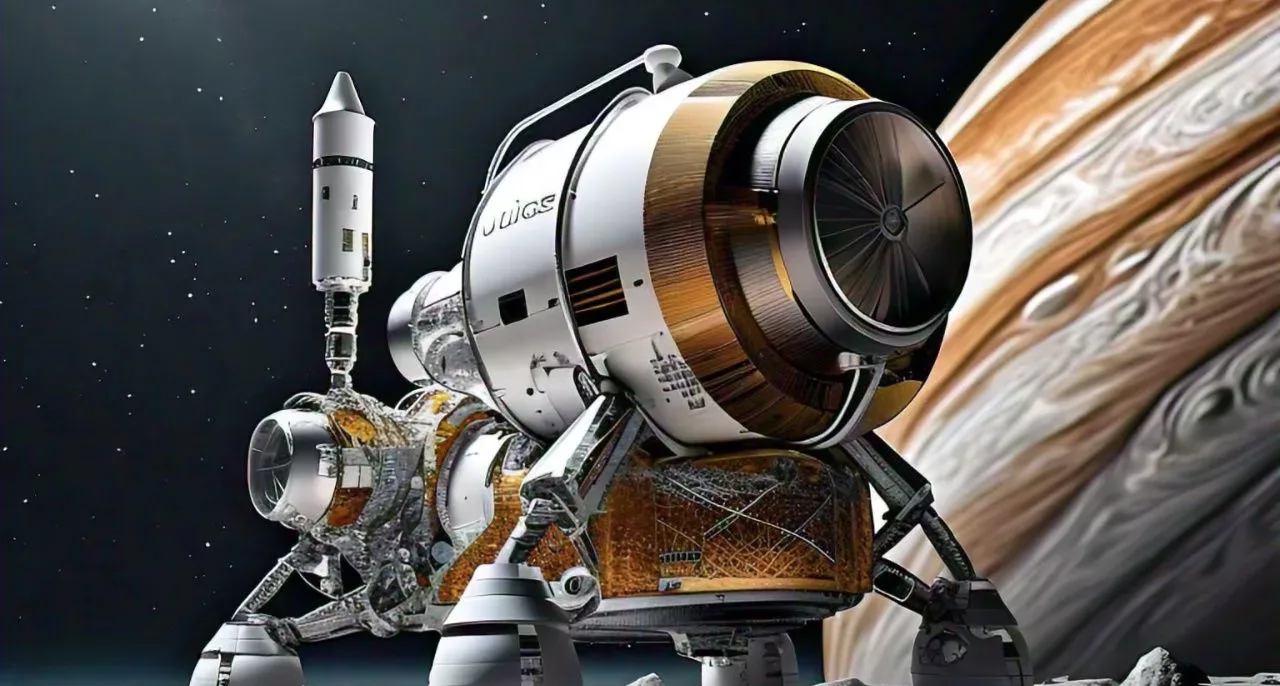The Historic Capture of Earth’s Radiation Belt
NASA has made available the sharpest images ever of Earth’s radiation belt, taken by the Jupiter Icy Moons Explorer spacecraft operated by the European Space Agency. But JUICE was designed for something much grander-a well-thought-out mission to explore Jupiter and its moons-and it has already proven this by offering unparalleled views of our planet’s protective magnetosphere. These images reveal not only the technological capability of the spacecraft but also the role of Earth’s radiation belt in protection from harmful cosmic rays.
JUICE: A Spacecraft Bound for Jupiter
Launched on April 14, 2023, the JUICE mission actually involves discovering the largest planet in our solar system, Jupiter, and its icy moons: Callisto, Europa, and Ganymede. The spacecraft is due to reach orbit around Jupiter in July 2031. Among the data it will collect are crucial details about Jupiter’s magnetosphere. In addition, it will further analyze the composition of the moons, particularly their possible habitability. Before reaching its final destination, however, JUICE is performing a series of gravity assists, utilizing multiple gravitational influences at various planets to alter the speed and flyby trajectory of the spacecraft.
Capturing the Sharpest Ever Images of Earth’s Radiation Belt
Though it was bound for Jupiter, JUICE has already made history during its flyby. On August 20, 2024, the spacecraft flew over Earth’s magnetosphere. When in this phase, the spacecraft was above 37,000 miles above the Pacific Ocean. During this phase, the onboard Jovian Energetic Neutrals and Ions instrument, called JENI, came to center stage. This advanced device captured some of the first-ever, high-resolution photographs of Earth’s radiation belt, a doughnut-shaped region of energetic ions and electrons surrounding the planet that shields it from radiation from the sun and the cosmos.
Images, considering the fact that the energies from the charged particles are lost rapidly to Earth’s atmospheric hydrogen gas, will be formed due to the collisions between the charged particles and the gas of hydrogen in Earth’s atmosphere. The sensors of the JENI instrument measured the collisions thus creating energized neutral atoms. This creates images unprecedented for scientists providing insight into the structure and behavior of the radiation belts. These images are bound to enhance our understanding of the defense mechanisms of the magnetosphere against harmful cosmic rays, thus helping protect life on our planet.
JENI Instrument: Johns Hopkins Applied Physics Laboratory (APL).
The Dual Gravity-Assist Maneuver: A Technological Feat
NASA and ESA engineers took advantage of the proximity of the JUICE spacecraft to both the Moon and Earth during the early stages of orbit to perform a gravity-assist maneuver. On 19 August 2024, the JUICE spacecraft flew by approximately 465 miles above the moon’s surface, and it provided the Jovian Energetic Electrons (JoEE) instrument onboard an opportunity to collect data on how space environments affect the Moon. It was the first-ever lunar-Earth flyby with a double gravity assist-an event deemed historic in the annals of space exploration by the NASA side.
This is one of the critical steps on JUICE’s journey to Jupiter. In this stage, a precise refinement of its trajectory in line with the gravitational pulls from the Moon and Earth precedes the long journey in space. Moreover, it provides a good testing environment for the instruments of the spacecraft to ensure they will work optimally as JUICE starts its scientific work around Jupiter in 2031.
Future Prospects at Jupiter and Beyond
JUICE Early Achievements
As far as JUICE’s successes go, there’s a lot still to come. After reaching Jupiter, JUICE will continue using its cutting-edge instruments like JENI and JoEE to explore the Jovian system. Scientists will have special interest in the magnetosphere of the planet and the way the moons interact with it; among them is Europa, which is regarded with a subsurface ocean. The data JUICE will collect will not only make our knowledge on radiation around Jupiter much better but also possibly shed light on its moons’ habitability.
Conclusion: A New Era of Space Exploration
Launched primarily to explore Jupiter, the JUICE NASA mission has already provided irreplaceable knowledge about Earth’s own cosmic environment. The sharpest-ever images of Earth’s radiation belt, obtained during a brief flyby, exemplify the advanced capabilities of the spacecraft. As JUICE moves on, it promises to unravel further mysteries of our solar system, hence expanding human knowledge of space environments near and far.
It’s ushering a new age altogether in space exploration, thanks to the state-of-the-art technology and groundbreaking findings. The mission stands as, from the Earth, a symbol of discovery, touching the boundaries that do exist around our knowledge of our very own Earth, and all the way up to such distant worlds in our solar system.
To learn more about JUICE’s instruments and mission:
NASA and ESA are leading the way of space exploration for future years by incorporating technology, collaboration, and ambition into science.
For More Updates: Space


